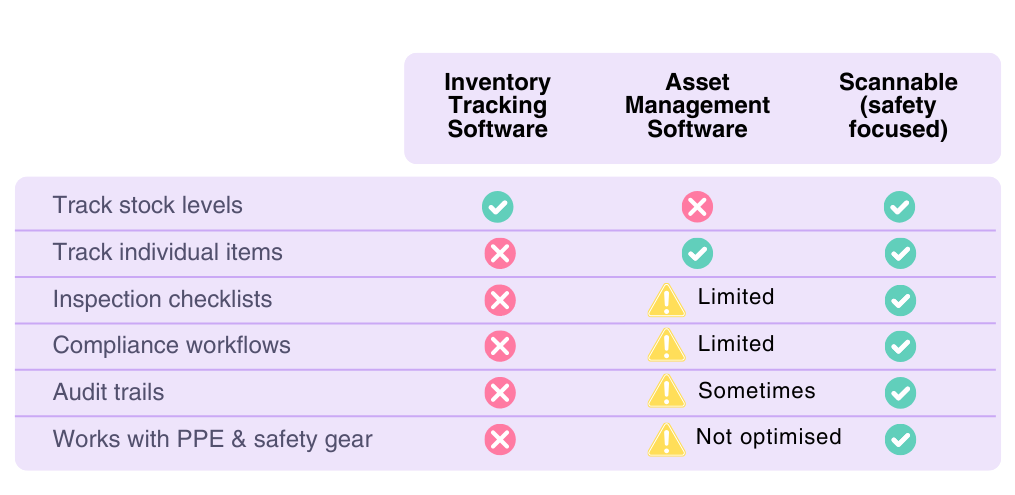When it comes to managing safety equipment and PPE in high-risk industries, many teams are unsure whether they need an inventory management system or an asset inspection platform. The truth is, traditional solutions often fall short - because most were designed for retail stock, office assets, or generic warehouses, not for equipment that people’s lives depend on.
So, how do you know which system is right for your team? Let’s break down the difference between inventory tracking software and asset management software, and where a purpose-built solution for safety gear fits in.
An inventory management platform is designed to monitor quantities of stock - what’s in, what’s out, and where it’s stored. Common features include:
For a comprehensive guide on inventory tracking software, check out our guide "Inventory Management Software & Tracking Systems: Everything You Need to Know".
For industries like retail, logistics, and warehousing, these features are essential. But for safety-critical teams - rope access, tree care, construction, mining, emergency services - stock control is only one part of the equation.
Asset management systems are broader in scope. Instead of tracking boxes on a shelf, they focus on individual pieces of equipment, their lifecycle, and their value to the business. Key features include:
This makes asset management platforms better suited for organisations that need to track durable, high-value equipment. But here’s the catch: most generic asset inspection software wasn’t built with safety regulations in mind - meaning compliance with LOLER, OSHA, or WHS often requires workarounds.
For safety-critical teams, tracking stock or assets isn’t enough. PPE, harnesses, helmets, ropes, breathing gear, lifting equipment - all of it must be:
That’s why many teams struggle with generic inventory management software or broad asset inspection platforms. They weren’t designed for the complexity of compliance workflows, or the need to work in the field or prove safety checks instantly in an audit.
A purpose-built cloud-based inventory software like Scannable bridges the gap between inventory tracking and asset inspection:
Scannable is more than just inventory tracking software - it’s a compliance-ready asset inspection platform purpose-built for safety-critical industries.

If you’re managing retail stock, a standard inventory management system is enough. If you’re tracking IT assets or vehicles, an asset management platform might work. But if you’re responsible for safety equipment in high-risk environments, you need something different: a solution that combines inventory tracking with asset inspections and compliance workflows.
That’s why Scannable exists - the fastest, easiest way to track safety gear, prove compliance, and stay audit-ready.